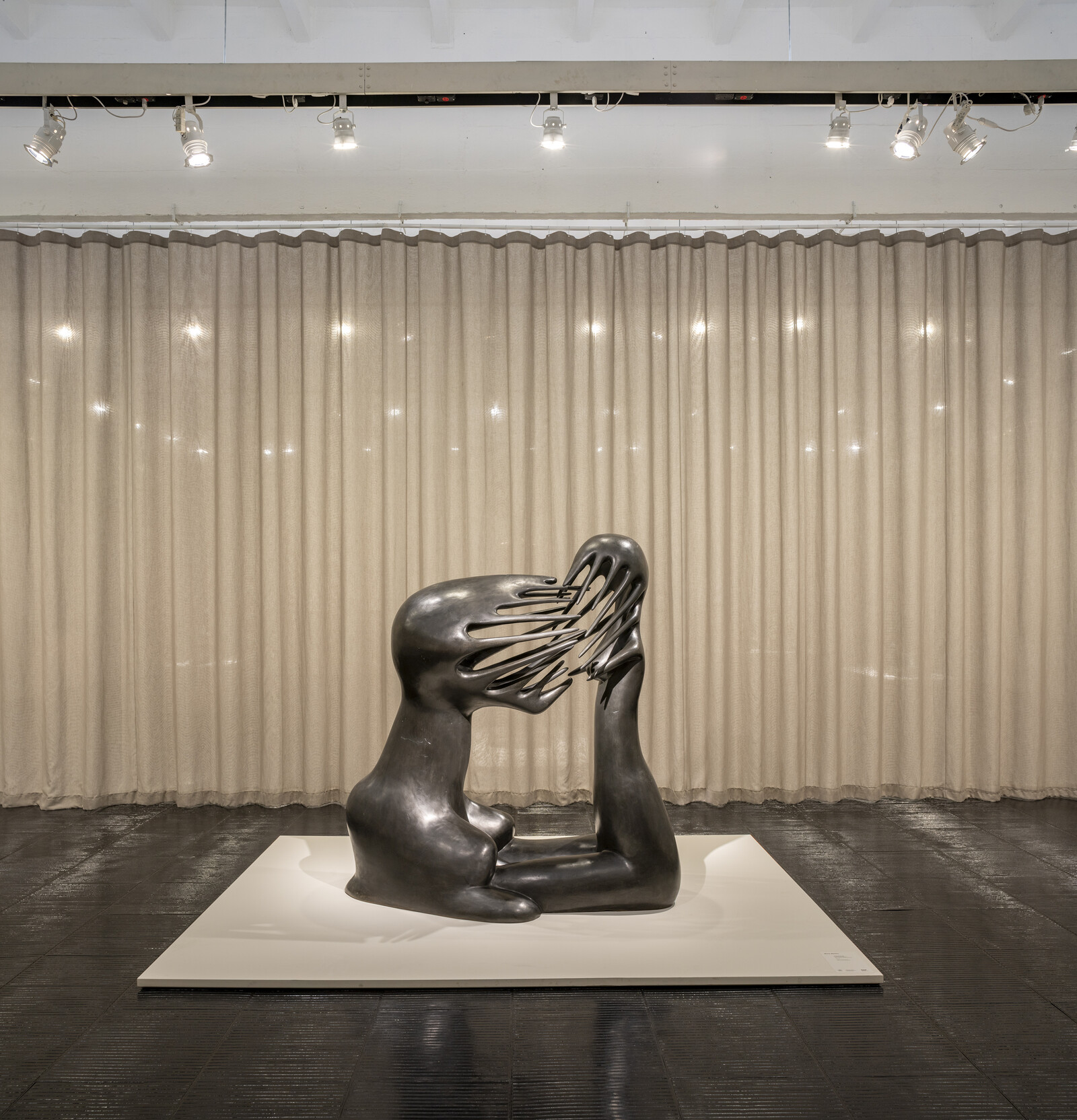August 27, 2021–January 30, 2022
Avenida Paulista, 1578
São Paulo-SP
01310200
Brazil
Hours: Tuesday 10am–8pm,
Wednesday–Sunday 10am–6pm
T +55 11 3149 5959
imprensa@masp.org.br
“Desire must have a lot of imagination to be able to support itself.”
—Maria Martins, 1948
Maria Martins (b. Campanha, Minas Gerais, 1894, d. Rio de Janeiro, 1973) played an essential role in the development of Brazilian Modernism, making her mark on both the panorama of international Surrealism and the history of art in the 20th century. She is known for her bronze sculptures, drawings, and engravings depicting hybrid female figures as well as myths from Amazonian Indigenous, Afro-Brazilian, and classical traditions. This is the largest exhibition dedicated to the artist in recent years.
In the 1940s, after moving to the United States from Brazil, Maria Martins became well known as an artist and cultural intermediary, quickly obtaining a place in the international art circuit. The fact that she developed much of her work abroad prevented her from actively participating in Brazilian Modernist movements; however, Martins never failed to carry out her unique readings of and contributions to a certain Brazilian visual language, which gave her the epithet “sculptor of the tropics.”
The artist sought references for her earliest works in Amazonian myths and aspects of Afro-Brazilian culture, putting them in conversation with the trends of Brazilian Modernism in the first half of the 20th century. From the mid-1940s onwards, she set aside a visuality commonly associated with Brazil and began to create her large escale “myths” in bronze sculpture.
Issues related to desire, eroticism, and the idea of the feminine were strongly felt in Martins’s artistic practice. In her work, they take on “monstrous” and unsettling features, challenging both the moral codes of her time and the international public’s expectations regarding the work of a female Brazilian artist.
The epigraph of this text is taken from Martins’s notes on a work titled Désir imaginant (literally “Desire that imagines,” or “Imaginative desire”), whose current whereabouts are unknown. By placing desire as the subject of the action of imagining, Martins emphasized its creative, transformative, and subversive potential. As such, desire can be understood as a driving force behind all that she produced, a force that gives agency to a feeling that is often silenced, especially when expressed by a woman.
Maria Martins: Tropical Fictions features 45 works, including sculptures and prints, produced in the 1940s and ‘50s, as well as 37 publications and photographs on the artist’s trajectory. The exhibition is divided into five sections that address the ways Martins articulated various imageries related to Brazil and the tropics—a place she reclaimed, reaffirmed, and reinvented throughout her career.
This exhibition is part of MASP’s two-year program dedicated to Brazilian Histories in 2021–22, coinciding with the 2022 bicentennial of Brazil’s independence. In this first year, all of the progam’s exhibitions are dedicated to women, with solo shows devoted to Conceição dos Bugres, Erika Verzutti, Gertrudes Altschul, Maria Martins, Ione Saldanha, and, in the Video Room, Ana Pi, the collective Teto Preto, Regina Vater, Zahy Guajajara, and Dominique Gonzalez-Foerster.
Maria Martins: Tropical Fictions is organized by the Museu de Arte de São Paulo Assis Chateaubriand, where it is curated by Isabella Rjeille, in partnership with Casa Roberto Marinho, Rio de Janeiro, where it is curated by Rjeille and Fernanda Lopes.
A fully illustrated monograph edited by Isabella Rjeille accompanies the exhibition with texts by Rjeille, Alyce Mahon, Beverly Adams, Fernanda Lopes, Joanna Fiduccia, Laura Cosendey, Marina Mazze Cerchiaro, Mariola V. Alvarez, Terri Geis, Tirza True Latimer, and Veronica Stigger. With Portuguese and English versions, the 304-page publication is available through masploja.org.br or loja [at] masp.org.br.
For additional information and images visit here.


